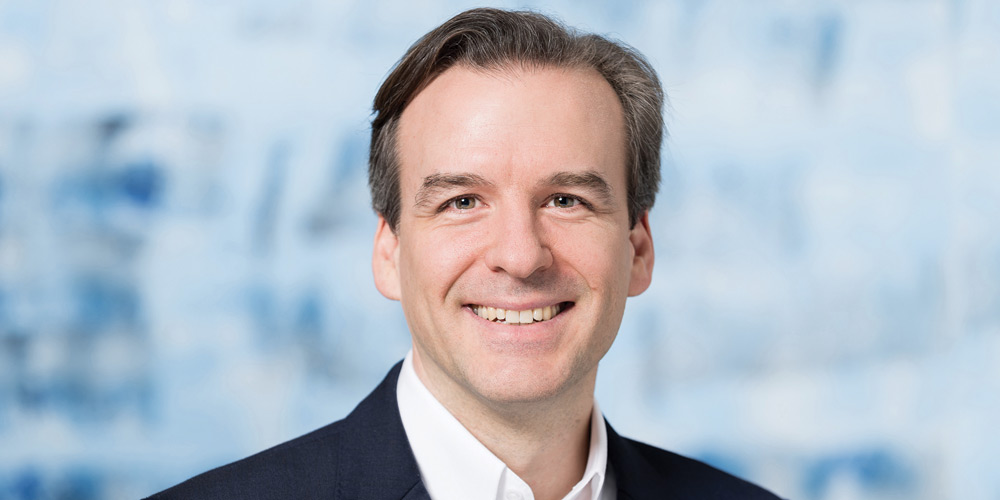How to create happier employees
Professor Jochen Menges on the ways companies can develop well-being initiatives that genuinely make people feel better.
A version of this article appeared in the Autumn 2019 issue of strategy+business.
In recent years, many company leaders have embraced well-being and happiness initiatives as critical to both their employees’ satisfaction and the success of their organization. They have rolled out a variety of programs designed to encourage people to focus on wellness and avoid the harmful effects of stress. What may have at one time been perceived as a perk is quickly becoming a staple of corporate life.
Although few would argue with the notion that companies should do what they can to promote the well-being of their workforce, a question looms: Are these initiatives actually making people happier? It’s an issue that Jochen Menges, who holds the chair of human resource management and leadership in the department of business administration at the University of Zurich and works as a university lecturer in organizational behavior at the University of Cambridge Judge Business School, has grappled with for much of his career.
Menges studies the role of emotions in organizational life and has worked as a researcher, teacher, and consultant at companies large and small in both the U.S. and Europe. He’s observed firsthand how positive emotions can motivate and inspire people, but he has also seen that such feelings are not easy to engender. What makes one employee happy won’t necessarily have the same effect on the colleague sitting one desk away.
These and other findings from Menges’s research call into question the efficacy of one-size-fits-all programs and instead point to a more individualized approach to addressing well-being in the workplace. It’s an approach, as Menges recently described for strategy+business, that is challenging to implement given the current structure of many established organizations — but that may hold the key to helping people feel happier at work.
S+B: In your observation, how effective are the majority of today’s corporate happiness and well-being initiatives?
MENGES: They are a good start. These programs show that organizations understand that their employees’ emotions matter. That is in line with 30 years of organizational research, which has revealed the powerful effects emotions have on how employees behave at work.
Having said that, many well-being initiatives fall short of expectations, because they only offer ways to relieve stress — for example, through yoga classes or massages — and do not resolve the problems that originally caused the stress. If organizations want to be serious about employee well-being, they need to reconsider how work gets done and systematically remove unnecessary stress factors.
Also, many happiness initiatives are not ultimately making employees happy, because they follow a prescriptive approach that just doesn’t connect with employees. What my colleagues and I have found (this is ongoing work, not yet published) is that what it means to be happy differs widely among people. Some of us, when we say we want to be happy, actually mean that we want to feel calm and relaxed. That’s what we would consider a state of happiness. Then there are others who would say, “I want to be excited and enthusiastic. And if I’m feeling that, then I am happy.” There may be others who need to feel inspired and awed in order to feel happy. Some people want to be valued and appreciated, and still others just want to have a safe, secure job.
This is the foundation of what we’ve termed emotional diversity: the idea that we all differ in what makes us happy, and thus that any singular approach to happiness is doomed to fail. We believe to be happy means to feel the way that you wish to feel. And that will be different for different people. When companies launch one-size-fits-all happiness initiatives, they are not necessarily delivering the kinds of experiences to employees that will make them happy as individuals.
S+B: Happiness requires personalization.
MENGES: If you look into conversations among HR leaders about how to apply artificial intelligence, it oftentimes goes in this direction of individualizing experiences at work. What I’m arguing is that we have to do that not only with respect to people’s skill sets and competencies, but also with respect to how people wish to feel.
I ask the executives I work with, “What makes you happy at work?” Then I ask them, “What happens if you’re happy?” They tend to realize that when they feel that way, their performance is good. Then I say, “Let’s write down the names of your three most important subordinates. What is it that makes them happy?” It turns out what makes each of the three happy is different from one to another, and it’s different from what the executives wrote down for themselves. Acknowledging this distinction is the first step toward personalization, toward treating every employee with individual care that allows for differences in how they wish to feel.
In practice, however, many leaders will only focus on what makes them happy. They project their own way of feeling happy onto others, and then when people aren’t coming along, the leaders complain about people’s attitude or their lack of enthusiasm.
By making leaders realize that the source of happiness differs from person to person, we provide those leaders with a powerful toolbox. Because emotion is closely linked to behavior, if we were able to individualize emotional experiences in organizations, we’d go a long way in facilitating innovation, productivity, and engagement.
S+B: What else gets in the way of companies’ happiness initiatives?
MENGES: The organizational structure at most companies is still pretty much the one that we had in the industrial age. It’s a layered bureaucracy, and that kind of system was set up in order to keep emotion out. One of the ideas of the industrial age was that feelings interrupt the work process; they hinder efficiency. If bureaucracy was created in order to basically neutralize emotions, now, 100 years later, we’ve noticed it doesn’t work. Typically that suppression leads to negative feelings that leave people upset and tired and stressed.
What my colleagues and I have found is that we need emotional intelligence not only among those who lead in organizations — we’ve known that for 25 years. But we also need emotional intelligence at a systems level, at an organizational structure level. That insight is very fresh, in the sense that we haven’t really considered what an “emotionally intelligent organization” would look like.
S+B: How can organizations start to become more emotionally intelligent?
MENGES: We have a set of ideas — again, this is ongoing work — about how this could happen. In a published study of 161 organizations and more than 24,000 employees, we found that those organizations that were more decentralized had more happiness and energy. Decentralization allows for more individually tailored experiences. That in turn may lift people up, because now they can shape their work environment and can make the decisions that they believe are appropriate to themselves, instead of having to ask someone higher up or going through a bureaucratic path to seek approval.
If we were able to individualize emotional experiences in organizations, we’d go a long way in facilitating innovation, productivity, and engagement.”
In the same study, we also found that in organizations in which people report feeling happy and energized, the HR system is deliberately built around emotions, at least in part. That means that, for instance, with recruiting, it’s not only about analytical skill sets and job-relevant competencies, but also about emotional abilities. In the selection processes, candidates are questioned to determine how they deal with emotions and how they would handle different people with respect to the emotions they have. Moreover, in these organizations, the promotion processes are not just about whether someone has performed well in the past, but also about whether he or she can inspire people.
Once you have emotionally intelligent individuals in managerial positions, the organization as a whole may become more emotionally intelligent. That’s because these individuals will create different types of processes and procedures and ways of working.
So we’ve identified the structural issue: We need less centralization. And a functional issue: HR plays a key role in bringing emotion into the workplace. But this is just the starting point. The idea of the emotionally intelligent organization is one that requires more work, and that’s what I’m currently focused on.
S+B: You’ve also studied the role of company leaders in creating a particular type of emotional environment. What do these findings show?
MENGES: There are many forces that drive emotions in organizations, but one key reason that people feel the way they do is the leaders in the business, both directly in their units, and of the business as a whole. In those places where we see positive, upbeat emotions, the leaders tend to be charismatic.
These leaders are able to identify a common emotion in groups of people. For example, they can spot when the whole organization is tired because it has gone through too many transformations. Or when the whole organization is angry because of the way that employees have been led in the past. The charismatic leader then expresses that emotion, too, and in so doing becomes a member of the group.
Through feeling the same way others do, charismatic leaders legitimize their leadership ambition. But it also leads them to question the kinds of emotions that they share with others. They say, “Well, we’re all angry, and it can’t go on like this. But should we be so angry?” People start to question whether it’s the appropriate emotion. The leader then offers an alternative — if we only did this instead, then we could all feel differently.
When listening to a charismatic leader, people tend to put aside their concerns and follow him or her, something I call the awestruck effect. It’s great if you want to push large-scale change in an organization. But it can have a downside, in that people may set aside justified concerns and thus follow too willingly a flawed path of action.
My preliminary findings show that the awestruck effect can be offset with a second leadership style, which is called individualized consideration. In my view, the best kinds of leaders are those who can be charismatic “onstage” and are individually considerate “offstage.” In other words, these people are able to work the emotional magic in front of a crowd, and people look to them for guidance and inspiration, but they also are able to see and treat people as individuals in smaller settings. In so doing, these leaders can bring people together, but also create emotional experiences for employees that help them to feel happier at work.
This ties to the thread running through all of my research: Getting emotions right — through formal, structural means and informal, cultural means, and, most important, through the right leadership — will be the key to the survival and success of organizations in the 21st century.




